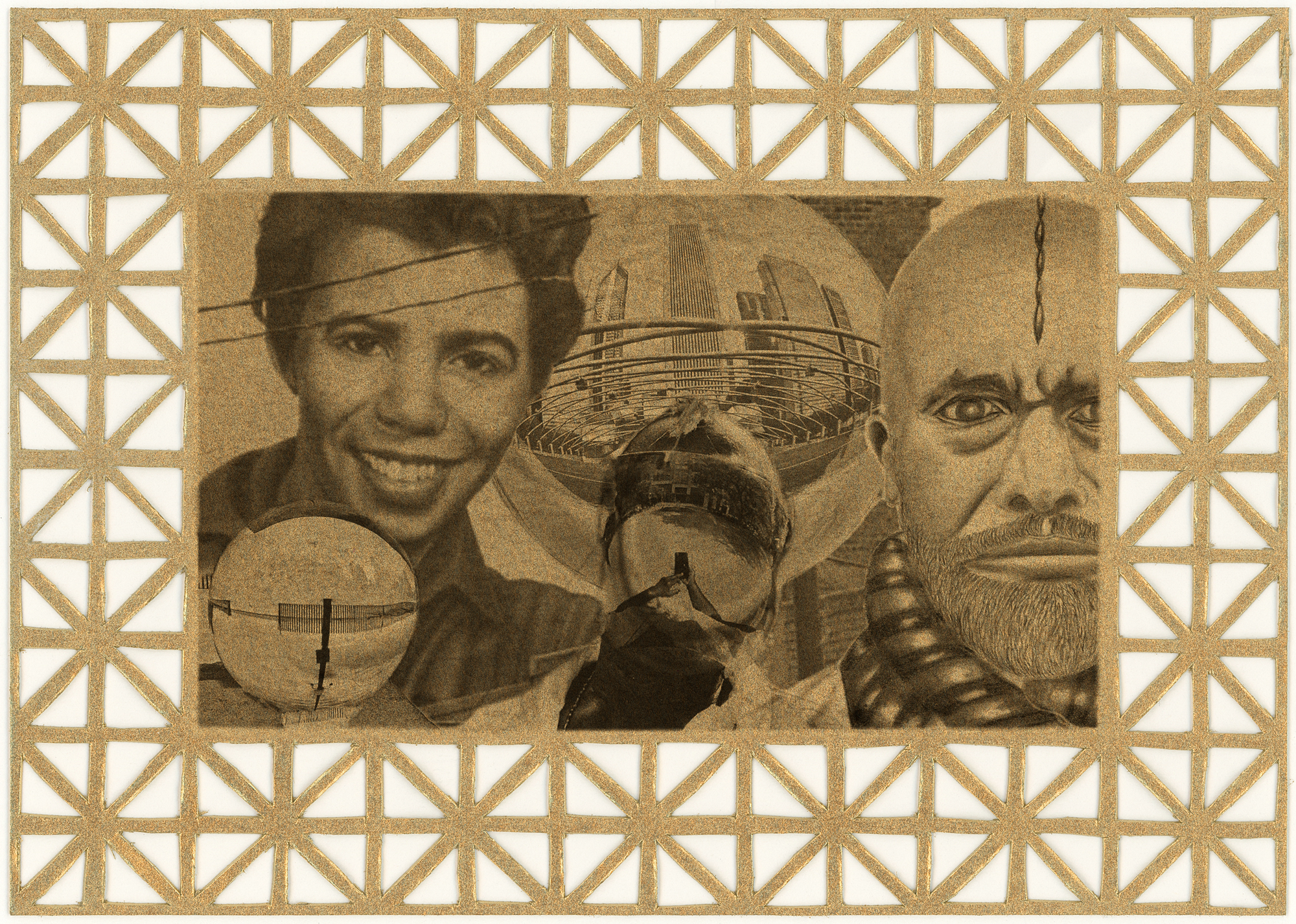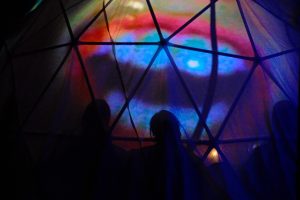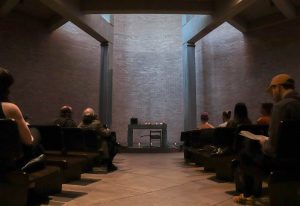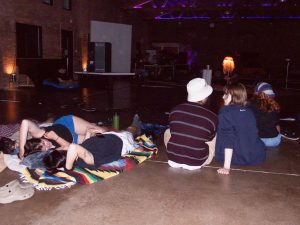
This article is presented in conjunction with Art Design Chicago Now, an initiative by the Terra Foundation for American Art that amplifies the voices of Chicago’s diverse creatives, past and present, and explores the essential role they play in shaping the now.
Voices from the Margins, Vol. II: Present Within the Stream of Life is a collection of essays authored by people with lived expertise in houselessness and housing insecurity. Each essay explores different aspects of Chicago’s art, artists, architecture, and design with the goal of reimagining art history by including diverse perspectives and voices that have been underrepresented or excluded in traditional art history narratives. In other words, the essays are an attempt to broaden the scope of art history by including the stories, experiences, and contributions of people who have been historically marginalized, with the ultimate goal of creating a more inclusive, expansive, and flourishing community. The authors in Voices from the Margins, Vol. II convey an authenticity and resiliency that complete a history of Chicago — a history I’ve wondered about since I arrived in this city.
Voices from the Margins was developed by Red Line Service with the support of Terra Foundation for American Art’s initiative Art Design Chicago Now. Founded in 2014, Red Line Service is a nonprofit organization created by and for people with a lived experience of homelessness or housing insecurity. Red Line Service collaborates with artists and cultural institutions to expand access to the art world in order to foster a sense of community emphasizing the importance of belonging and mutual care crucial to securing and retaining housing. Ultimately, their mission is to “use the arts to destigmatize houselessness, decrease social isolation, develop social cohesion, and provide channels for artistic talent to be recognized.” Although readers will only have access to a physical book, rather than an additional open access1 copy, Red Line Service has also programmed a series of art history presentations open to the public and will be hosting a free launch party for the book. In addition to this public-facing work, Red Line Service organized writing workshops for the authors, conducted one-on-one consultations with authors to create the publication.
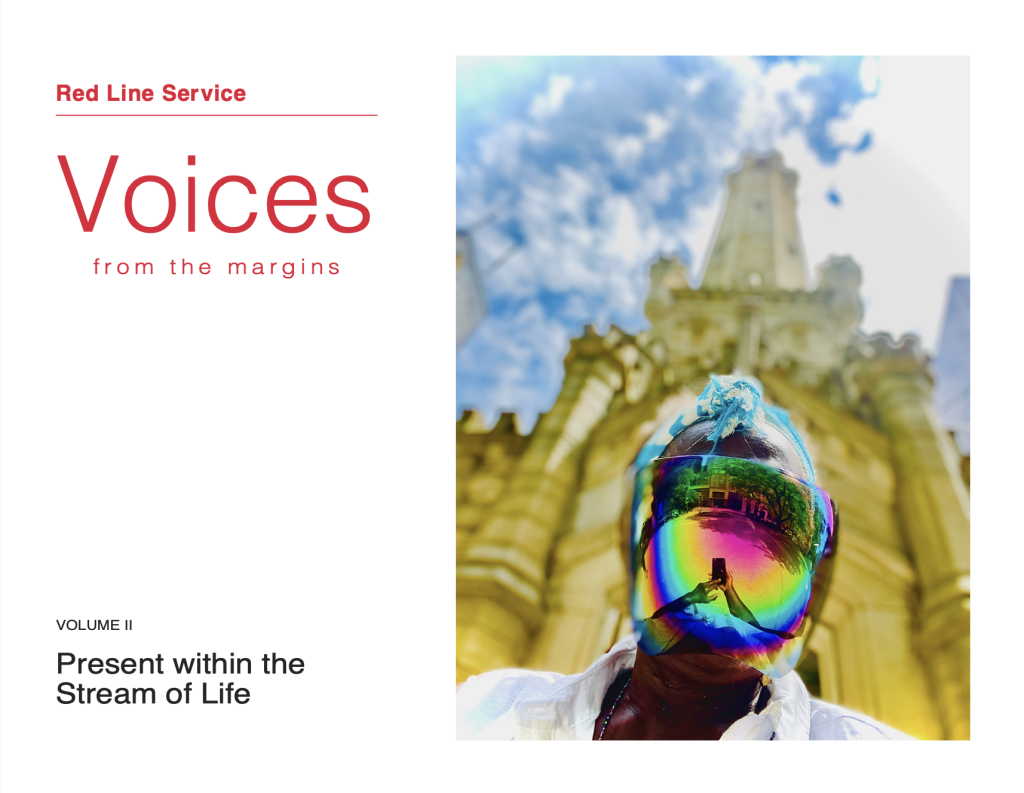
The introduction to Voices from the Margins, Vol. II, “Against Type: Connection as Aesthetics,” articulates the inspiration and ethos behind the project as a whole. Currently, the traditional standards of “objectivity” and credentialing within the field of art history have limited the types of knowledge that can be produced and the voices that are heard and considered authoritative. As a result, diverse perspectives have been excluded and power imbalances perpetuated. Voices from the Margins, Vol. II emphasizes a “range of writing experience in defiance of a culture of white professionalism,” meaning the standardization of grammar, traditional modes of credentialing, and peer reviewing were rejected, and the authors personal connections with works of art was prioritized. Voices from the Margins, Vol. II upholds the value in the subjective perspectives, allowing individuals to bring their own experiences and identities to their analysis and interpretation without the limits placed on traditional publication that can exclude those who are unfamiliar with the ultimately arbitrary rules often defended as “objective.”
While each essay is a distinctive piece, there is an overarching connection among the authors that becomes apparent by the end of the publication: resilience.
“Flamingo” by Lacey Harris discusses the 53-foot tall sculpture by Alexander Calder located in the Federal Plaza in front of the Kluczynski Federal Building in Chicago. Harris discusses his personal connection with the work, expressing “I could very easily spend the rest of my days here. This structure makes me feel so secure. Almost as if it’s a part of me. I remember the first time I saw it, at night, I knew that it was something special.”
He also explains the history of the piece as a gathering point for political protesters:
“Yes, there have been protests on the plaza. In fact I remember my old high school holding one there, around Flamingo on October 7, 2004. Teachers, parents, and students were protesting the plan to commandeer a third of my former high school, already overcrowded, for a naval academy. To get there from Senn High School, protesters needed only take the Red Line and walk a few blocks, where Flamingo made a great backdrop for news cameras and for bystanders like myself. Easy to get to and on federal land, Flamingo is a great focal point for protests, and has hosted BLM, police reform, abortion rights protests, the list goes on. The soaring red arch has become a symbol of protest in the Federal Plaza.”
At the end of the piece, Harris reveals that Flamingo is on a short list to be sold and dismantled. By advocating for the preservation of the sculpture, Harris stresses the importance of protecting and valuing cultural heritage. For some people, the Flamingo might be a hunk of red metal, but to Harris and others, it provides a source of strength and comfort.
In “An Intimate Conversation with Lorraine,” Big Mama writes a poem to the playwright and author Lorraine Vivian Hansberry. Big Mama’s poem is an ode to the icon. She writes, “Lorraine, you provided a bridge for me.” There is a picture of the Lorraine mural near the 51st/53rd St. (Hyde Park) station off the Green Line. I walk past this mural all the time. I’m almost embarrassed to admit, even though I read Hansberry’s work, I never knew what she looked like. For years, I’ve wondered who made the mural and who it was depicting. Not only did I learn about Hansberry’s image from Big Mama’s essay, I learned a lot more about Hansberry’s personal life such as her struggle to be openly queer.
By praising Hansberry’s accomplishments and emphasizing the impact she had on her community, Big Mama is celebrating the resilience of both Hansberry and the people she inspired. “An Intimate Conversation with Lorraine” connects the public mural of the Chicago icon with the lives of people experiencing homelessness and other marginalization to honor the strength and perseverance of both its subject and readers.
Deborah Awwad, a photographer, spends her days walking around the city capturing the stories of everyday life despite her diagnosis with spinal stenosis. She explains, “I am in constant pain because I have to walk long distances to get my storytelling photos. Moving through the pain of my spinal stenosis helps me take photos of things other people miss. I like to take reflections, or pictures down low or up high that spark meaning in me, even though it hurts.”
Awwad uses her cell phone as a camera and learned to photograph by watching YouTube videos. She admits that the phone and free features to crop the photos are limiting. However, it becomes apparent when viewing her photographs, that Awwad has learned to work with these limitations to make her images visually complex and compelling.
Manami Matsumoto is another author who finds resilience in creativity. For Matsumoto, writing is a cathartic experience for processing emotions and experiences. In “Still Struggling Against a Broken Promise,” he writes,
“I feel from [Francis W. Chapin’s] work, connecting to the promised future and hope that was not delivered to people, something about my own life. An immigrant looking to the U.S. for a better job and future for myself, yet it wasn’t easy. After many challenges in the U.S. like unemployment, domestic abuse, homelessness, I came to Chicago and didn’t look back. In Chicago, like Chapin, I find broken promises, but also hope for the future. I keep going and won’t give up, like the El train on Chapin’s track, until death, my final station.”
There is a lot to be admired in the resilience, honesty, and vulnerability in Voices in the Margins, Vol. II that establishes a compassionate community between individuals with housing and those without, while recognizing that supporting others entails not only tending to their physical needs but also their emotional well-being. Voices from the Margins, Vol. II encourages readers to think critically about these issues and to appreciate the value of diverse perspectives and personal connections in the production of knowledge about art and culture. By doing so, readers gain a deeper understanding of the complexities of art, particularly in Chicago, and its meanings, and may also become more aware of the need for greater inclusivity and diversity in the field of art history.
Voices from the Margins, Vol. II: Present Within the Stream of Life includes contributions by Amanda Leigh Davis and Rhoda Rosen, Ravi Arupa, Deborah Awwad, Valerie Bankston, Lacey Harris, Vernon Jones, Big Mama, Manami Matsumoto, Michael MacRae, Chris O’Hara, Sheba Peaker, John Riley, William Robinson, Shaylynn Scales, Max Stoller, Tracey Xmas.
The book launch for Voices from the Margins, Vol. II: Present Within the Stream of Life will be held at Mana Contemporary in Chicago on May 18, 2023, 6-8pm, as part of Art Design Chicago Now.
* * *
Notes:
1 “By ‘open access’ to the literature, we mean its free availability on the public internet, permitting any users to read, download, copy, distribute, print, search, or link to the full texts of these articles, crawl them for indexing, pass them as data to software, or use them for any other lawful purpose, without financial, legal, or technical barriers other than those inseparable from gaining access to the internet itself.” — Definition sourced from The Berlin Declaration on Open Access to Knowledge in the Sciences and Humanities.

About the Author: Livy Onalee Snyder is based in Chicago. She graduated from the University of Chicago with a Masters in Humanities. She has published in Sixty Inches From Center, Ruckus, Newcity, Tiltwest, Denver Art Review: Inquiry and Analysis (DARIA) and interviewed artists for Black Cube Nomadic Museum. Currently, she holds a position at punctum books and advocates for Open Access. Read Livy’s writing for Sixty here.
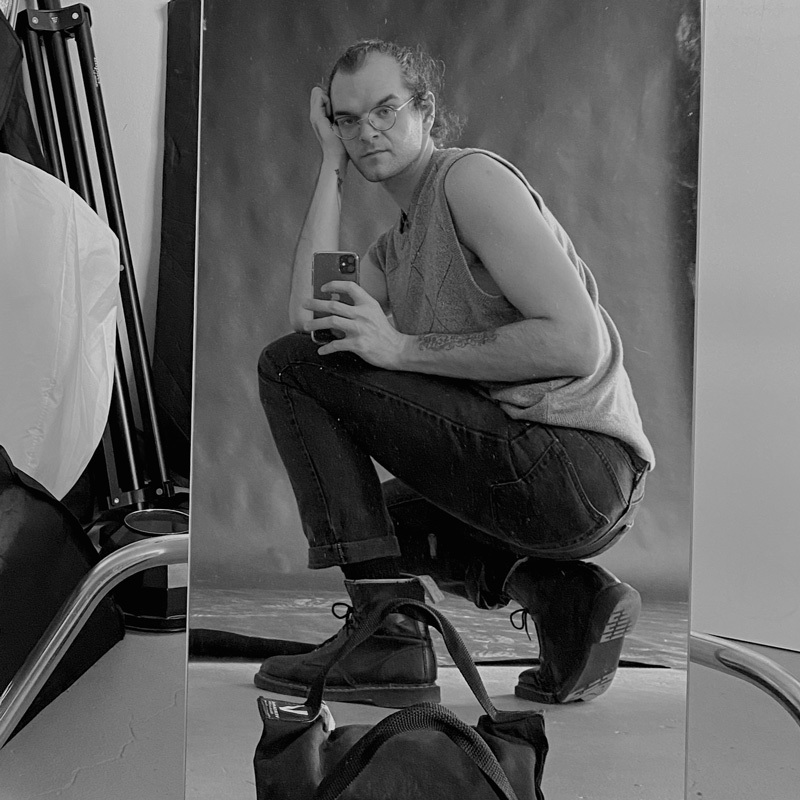
About the Artist: Ryan Edmund Thiel (they/he) is an artist, photographer, and graphic designer living in Chicago. Their work across media explores healing, liberation, and empowerment for the individual and collective. Their mission is to support artists and organizations whose values align with care, social justice, and collective organizing. Ryan is also the lead graphic designer for Sixty Inches From Center and co-lead of Sixty Collective. View their work at ryanedmundthiel.com and @talldarkandryan on Instagram.
